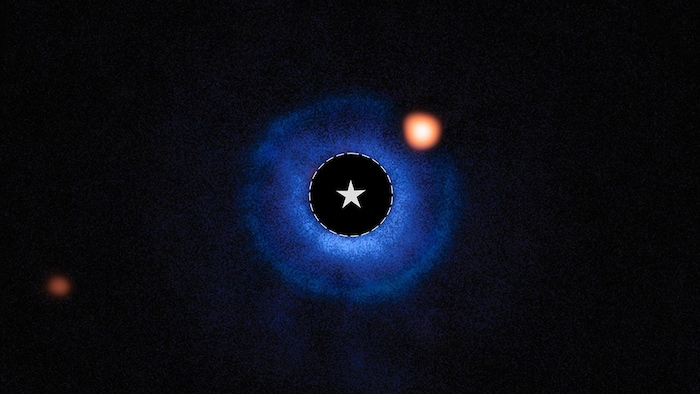The James Webb space telescope (TSJW) discovered its first exoplanet in the nearby universe thanks to a promising observation method to detect planets of a size similar to those of the solar system.
Since 2022 and his observation post at 1.5 million kilometers from the earth, the Tsj helped to characterize several exoplanets. He spent a lot of time observing planets that have never been pictorial
explains to AFP the astrophysicist Anne-Marie Lagrange, the first author of the study on the subject published in the review Nature (new window) (in English).
Difficult detection
Exercise is complicated by the fact that exoplanets are very little bright because they are not hot
but also and above all becauseWe are blinded by the light of the star around which they turn
add this researcher from CNRS In the instrumentation and research laboratory in astrophysics of the Paris Observatory.
The James Webb parade is based on its coronograph, an instrument that is inspired by the phenomenon of the solar eclipse by masking the star to better reveal what surrounds it, and on its spectrographer Miri, capable of imagining the most discreet stars thanks to an infrared vision.

The James Webb space telescope of NASA has obtained irrefutable evidence of the existence of a planet of a mass similar to that of Saturn in orbit around the young star near TWA 7.
Photo : NASA/ESA/ASC
Its users pointed out the telescope to the TWA 7 star, located in our galaxy to a hundred light years from the earth, in other words its very small suburbs. The target, initially detected by the Hubble telescope, was promising double -title.
First, because young of only 6.4 million years old and therefore very likely to see planetary bodies formed in the ceinturating matter disk. Then, because the telescope sees this protoplanetary disc from above.
Collaboration internationale
Its observation with the sphere instrument of the very large telescope, located in Chile, had made it possible to distinguish three rings staring at a distance up to more than 100 times that separating the earth from the sun.
And it is in the stronghold of the second ring that the instrument of the James Webb detected a source
Bright, called TWA 7B. Having excluded that the discovery turns out to be an object of the solar system or a distant galaxy, astronomers have identified it as a small cold planet, of a mass ten times lower than those pictured so far with other instruments.
They consider his mass comparable to that of Saturn, a gaseous planet that does not weigh
that a third of Jupiter, gaunt giant and heavy goods vehicles of our solar system.
With the James Webb, We fell from a ten -factor in detection capacity
explains Anne-Marie Lagrange, because the most light
Imaged so far from the ground weighed about three times the mass of Jupiter.
Most of the other pictorial exoplanets are what are called super-jupiter
having 8 to 12 times the mass of the latter.
Performance has all the more interest since in the planetary bestiary, rocky planets like earth or Mars have much lower masses than gaseous planets. However, these rocky exoplanets constitute an ultimate target of the discoverers of potentially habitable worlds.
Anne-Marie Lagrange would not sulk her pleasure as Discover the lightest planets and perhaps find land
. Before adding immediately that if We want to understand how planetary systems are formed, it is not enough to see the planets very or not massive
.
Because you must be able to detect all types of planets, in order to determine in fine If our solar system is unique or not.
Astronomers believe that the Tsj has the potential to detect and imagine planets with a mass even lower than TWA 7B.
But it will take future instruments, like those of the European giant telescope expected for 2028, to hope to grasp the image of worlds of a size similar to ours.

